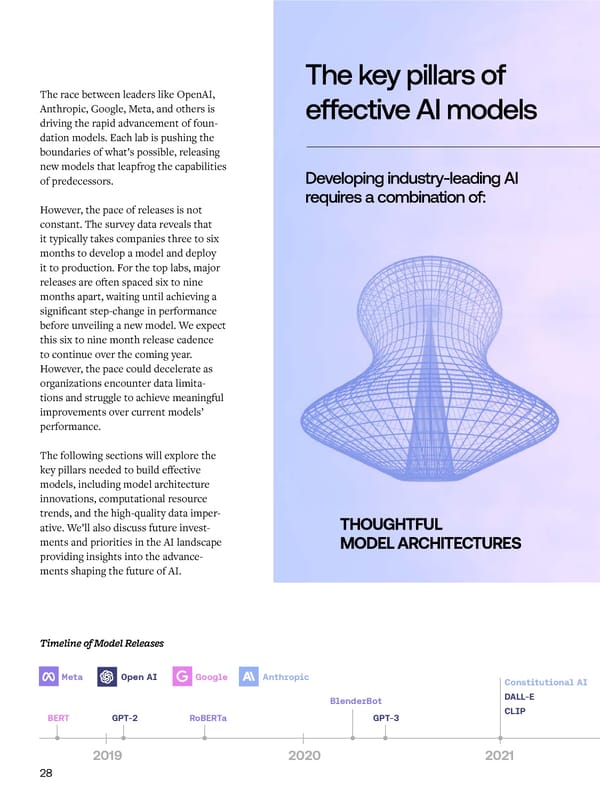The key pillars of The race between leaders like OpenAI, Anthropic, Google, Meta, and others is e ective AI models driving the rapid advancement of foun- dation models. Each lab is pushing the boundaries of what’s possible, releasing new models that leapfrog the capabilities of predecessors. Developing industry-leading AI requires a combination of: However, the pace of releases is not constant. The survey data reveals that it typically takes companies three to six months to develop a model and deploy it to production. For the top labs, major releases are often spaced six to nine months apart, waiting until achieving a significant step-change in performance before unveiling a new model. We expect this six to nine month release cadence to continue over the coming year. However, the pace could decelerate as organizations encounter data limita- tions and struggle to achieve meaningful improvements over current models’ performance. The following sections will explore the key pillars needed to build effective models, including model architecture innovations, computational resource trends, and the high-quality data imper- ative. We’ll also discuss future invest- THOUGHTFUL VAST COMPUTATIONAL CAREFULLY ments and priorities in the AI landscape MODEL ARCHITECTURES RESOURCES CURATED DATASETS providing insights into the advance- ments shaping the future of AI. ChatGPT Galactica InstructGPT Bard Timeline of Model Releases Imagen Claude 1 DALL-E-2 LLaMA GPT-4 PaLM OPT-175B Claude 2 Meta Open AI Google Anthropic Codey Whisper Claude 3 Constitutional AI Minerva PaLM-SayCan Segment Anything BlenderBot DALL-E CODEX Med-PaLM PaLM 2 BERT GPT-2 RoBERTa GPT-3 CLIP Gemini Claude Instant 2019 2020 2021 2022 2023 2024 28 29
 AI Readiness Report 2024 Page 29 Page 31
AI Readiness Report 2024 Page 29 Page 31